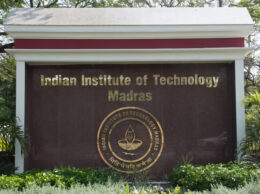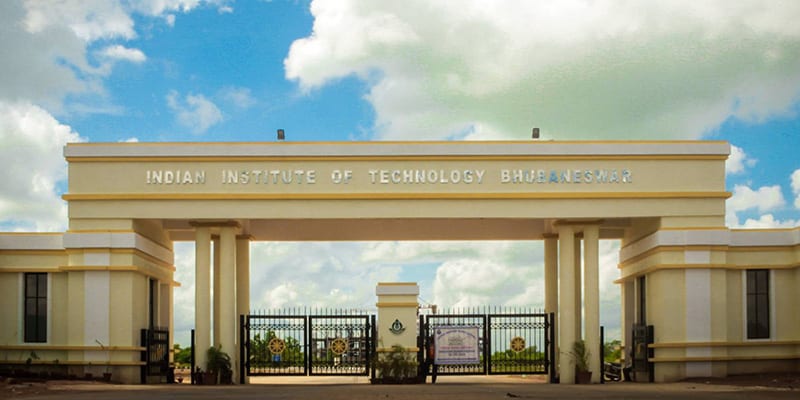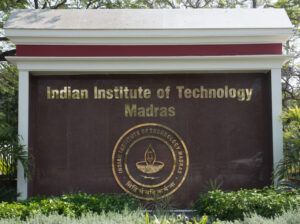CHENNAI : Many engineering structures including buildings, pipelines and rails, among others, require periodic testing to prevent catastrophic failures that can occur due to corrosion, impact, and strain. High-frequency sound waves that travel in the bulk (bulk ultrasound) are widely used for non-invasive and non-destructive testing of structural materials.
However, conventional bulk ultrasonic inspection is tedious and time-consuming, as it involves point-by-point assessment of structures, and this is especially challenging in large-scale assets. Although ultrasound guided by features such as plates, bars, wires, pipes etc. is an attractive alternative, such ‘guided ultrasound’ is limited by resolution due to the relatively lower frequencies used.
In breakthrough research addressing this pressing challenge, Indian Institute of Technology Madras and University of Nairobi researchers have used metamaterials to improve detection of defects in large structures by guided wave ultrasound.
The results of this collaborative work have recently been published in the international reputed peer-reviewed journal AIP Advances. The paper has been co-authored by Prof. Prabhu Rajagopal, Department of Mechanical Engineering, IIT Madras, and his collaborators at the University of Nairobi – Dr. Michael Gatari, and Mr. John Birir, a PhD student they jointly guide as part of a ‘Joint Degree Programme.’
“This work has much promise for remote inspection in industry and biomedicine,” the researchers write in their recent paper. With this knowledge, the team is expanding the concept to detect different sizes and geometries of defects.
Elaborating on this Research, Prof. Prabhu Rajagopal, Dept of Mechanical Engineering, IIT Madras, said, “The use of ultrasound scans in medical diagnostics is well-known and the principle remains the same for structural monitoring.”
Adding on, Prof. Prabhu Rajagopal said, “In conventional bulk ultrasound-based testing, the sound waves are sent into the sample, say pipe or pillar, perpendicular to the item, and a detector calculates the time interval between the transmission and reception of the sound waves that are either transmitted or reflected. Sound waves travel at a uniform speed if the object is defect-free, but defects impede or deflect sound waves, which results in delays in reception.”
Conventional ultrasound-based testing must be made at multiple regions of the test material and is therefore cumbersome to be used with large objects such as train tracks, oil-pipelines and reinforcing structures of tall buildings, among others
This is where Guided Wave Testing (GWT) helps. In GWT, the sound waves are sent along the length of the structure rather than into the structure. This allows the waves to travel long distances. GWT has poorer resolution than conventional ultrasound-based testing due to diffraction limitations. Thus, guided waves are only a long-range screening tool and must be used in conjunction with a testing tool with better resolution for accurate detection of defects.
Prof. Rajagopal and his research team used metamaterials to improve the resolution of guided ultrasound waves. “Metamaterials are artificially crafted materials with unique internal microstructures that give them properties not found in nature, explains Dr. Rajagopal. The constituent artificial units of the metamaterial can be tailored in shape, size, and interatomic interaction, to exhibit unusual properties,” explained Prof. Rajagopal.
Acoustic metamaterials are useful in manipulating sound waves. The Researchers used a metamaterial structure consisting of a series of periodically arranged channels. With proper selection of channel size, length, and periodicity of the metamateiral, the evanescent waves arising from scattering by a defect can be magnified by a process called Fabry–Pérot resonance. Resonance is a phenomenon in which a wave, in this case, the ultrasound wave, is amplified due to a match in frequency between the wave and the frequency generated by the metamaterial.
Sharing his experience on the project, Mr. John Birir, PhD student and Lead Author of the Research Paper, said, “My work in the oil and gas industry in Kenya as a certified NDT inspector gave me a first-hand experience on the limitations of some of the inspection methods in the market. Working with my guides Prof. Prabhu Rajagopal and Prof. Michael Gatari, we came up with ideas of how we can eliminate some of the limitations.”
Further, Mr. John Birir added, “The MoU between UoN and IIT Madras gave me access to state-of-the-art research equipment that enabled us to design experiments to implement one of the ideas we had on super-resolution imaging. Working with the research team at CNDE (Center for Non-Destructive Evaluation) at IIT Madras with our diverse experiences and skill sets (not to mention the many sleepless nights spent at the lab) we finally designed and developed a metamaterial that brings resolution of guided waves to a whole new level. I am very grateful for this international collaboration that has brought us to where we are today.”
Prof. Michael Gatari, Director, Institute of Nuclear Science and Technology, University of Nairobi, said, “The formal collaboration of IIT-Madras (IIT-M) in Chennai, India and Institute of Nuclear Science and Technology (INST), University of Nairobi, Kenya is the first collaboration of INST under South-South arrangements. Its success in two and a half years is worth recognition, widely, as an admirable example of what commitment can achieve in terms of not only technology transfer but support of the needy institutions in research capacity building and facilitation of research infrastructure.”
Further, Prof. Michael Gatari added, “Backed by a signed MoU on 26th July 2017, two Kenyan PhD students and Faculty members of INST benefited from IIT-M with a study of relevant courses to Non-Destructive Evaluation (NDE) research for six (6) months in 2018. Today, we are celebrating a featured article from one of them in AIP Advances. This is a unique achievement compared to all collaborations that we have been/are involved in, mainly under North-South arrangements, thanks to International Science Programme (ISP) in Uppsala University, Sweden for their input in all them. That kind of achievement is not common especially over the short time period of collaboration. The experience from the subject collaboration is a strong evidence that should alert development partners of Low- and Middle- Income Countries (LMICs) and research funding organisations/agencies towards increased funding support to South-South collaborations at both Continental and Inter-continental levels. It is also an important example to the Government of India, in its efforts to promote education and research in the south, to take note of this collaboration and assist. Research infrastructure and capacity are upcoming only recently in Kenya, and graduate students exchange and support is crucial. In view of the preceding information, Prof. Prabhu and I are prepared to strengthen the collaboration further with suitable support”.
The researchers used an aluminium bar with side-drilled holes as the test sample. The holes were the defects that had to be detected. The specially fabricated metamaterial was placed just above the holes. The transmitter was placed at the end farthest from the holes, and the receiver, close to the holes. The metamaterial resulted in detection of the holes with improved resolution down to 1/72 of the operating wavelength, which is the highest reported worldwide, for the ultrasonic domain. This level of resolution makes GWT comparable to bulk ultrasonic testing with the added advantage of longer range. Moreover, with skilful use of frequency, this approach also offers the tantalizing prospect of a guided ultrasonic microscope, with radical benefits for remote diagnostics.









